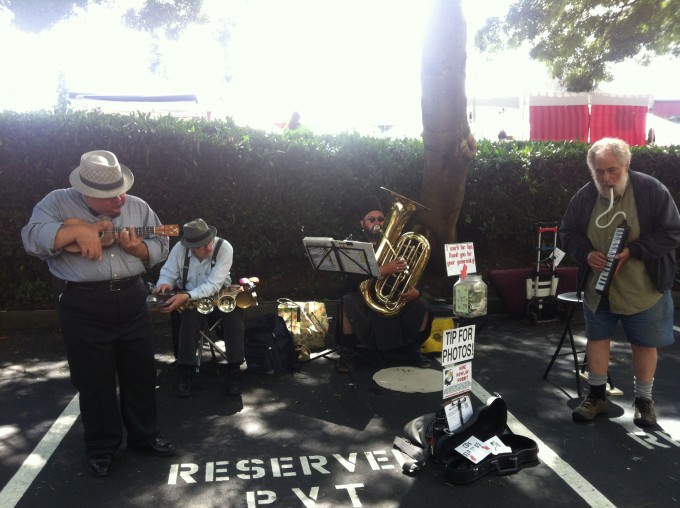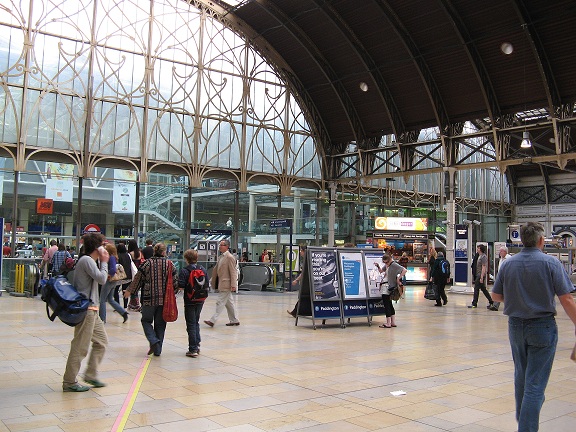Last week, the Planning Association of Washington (PAW) hosted their annual conference, which gathered a wide range of disciplines in planning like land use, transportation, architecture, and urban design. Sessions included topics like practical implementation of I-502, climate change initiatives (district energy projects and action plans), and communities preparing for northbound light rail. Perhaps the topic of most interest were the attitudes of different generations towards urban living, as Baby Boomers and Millennials represent the two largest cohorts in society. If you haven’t been paying attention, there is a huge demographic shift taking place across North America, not just Seattle. This may seem like a passing social anomaly in select cities, but it isn’t. It’s widespread and, to date, happening gradually. The question is when this shift will fully achieve its total saturation point.
Alan Durning of the Sightline Institute, Mark Hinshaw of LMN Architects, and Brian Vanneman of Leland Consulting Group in Portland hosted a panel on “Recognizing Imminent Demographic Change.” The panel represented an interdisciplinary view on future housing preferences, auto use, and differing intergenerational values among Boomers and Millennials affecting the social norms that ultimately guide public policy decisions.
In the session’s closing remarks, the questions raised varied widely between the baby-boomers versus post-baby boomers and between the rural and urban professionals in attendance. Attendees from around the state questioned under supply of urban schools, school mitigation fees, the economic sustainability of the rural town centers outside of Urban Growth Areas, Baby Boomer housing preferences, and ultimately whether suburban development will continue to attract younger generations. As one of two Millennials in the room, I was tempted to ask my colleagues if they had studied our generation in great detail or not.
I appreciated this session, as the presenters neatly packaged some assumptions I had about the future of new housing and market trends. Here’s some thoughts on demographic change.

LeMay-America’s Car Museum, Tacoma.
1. Car ownership for the 17- to 30-year-olds and teens with driver’s licenses have both decreased.
A driver’s license used to signify independence and “making it” to adulthood. These days, the number of 16-year-olds lining up at the DMV is dwindling. The University of Michigan Transportation Research Institute indicates that in 2010 approximately 50% of 17-year-olds possessed a driver’s licenses compared to 69% in 1983. In Seattle, average traffic volumes have dropped despite a growing population. Consider this: Seattle’s population increased 11% from 2000 to 2010 while per capita trips dropped by 20% over the same period.
2. Millennials earn less money, live in smaller spaces, and by default some have a lot less stuff.
The average income for Millennials is about $31,000. Younger generations tend to opt for various co-housing or home sharing options, sacrificing privacy. Average apartment size in Seattle is also lower than in previous generations; 400 to 700 square feet is typical for an urban singleton or childless couple. Essentially, Millennials are trading living space for quality public spaces. They see public spaces as their optimal living room or caffeine-infused home office.
Historically affordable pseudo-dormitory housing options have been zoned out of the city centers and many inner neighborhoods—things like boarding/rooming houses and extended-stay hotels. Today, the concept has been re-imagined with similar options, but with higher quality and more permanent forms like aPodments and microhousing units. This typology may well meet the needs of some Millenials and other age cohorts while encouraging new forms of intensification and mixed-income neighborhoods. Moreover, they provide a needed affordable housing alternative and opportunities for individuals from all walks of life (an address is key to getting back on your feet!).

Fremont Craft and Farmer’s Market.
3. Not all Baby Boomers are looking to slow down and retire. They are living longer, and some will forage for an urban and engaged lifestyle.
Baby Boomers will seek mid- to high-density housing. Some might even congregate near post-secondary institutions to attend a few classes or frequent the local facilities associated with colleges. In terms of demand, proximity to urban or neighborhood centers is in and golf courses are out. Many retirees, however, will continue to prefer the typical form of suburban development and the flexible to host family or friends it provides. Might retires opt for smaller homes and split their time between condo living (with adult-children) and places like Sonora, Arizona?

London Paddington Station, UK.
4. We’re seeing visible indicators that all generations are moving back to dense, well connected, walkable areas.
Cities will become increasingly populated. We know this. But what about Seattle? Housing building permits have reach their pre-recession peak. At the regional level, construction hasn’t reached the apex of the late 1980s, but metrics from 2014 will be interesting to compare.
To take a quick peek at the presentations, click here for the Sightline Institute and here for Leland Consulting Group’s (LMN’s presentation coming soon). A big thanks to the PAW Session Panel for providing their presentations and insight from the field.

Leila Willoughby-Oakes
Leila Willoughby-Oakes is a City Planner working just south of Seattle, Washington and lives in the Rainier Valley. She received an Urban and Regional Planning degree from Waterloo and completed a Master of Public Administration at the University of Victoria. She has gained local government and consulting experience in Ontario, British Columbia, Newfoundland, and Labrador, and Washington State concentrating in public policy, land development, and corporate administration. In 2013 she completed an award winning waterfront community engagement project on sea level rise while working for the Town of Qualicum Beach.

